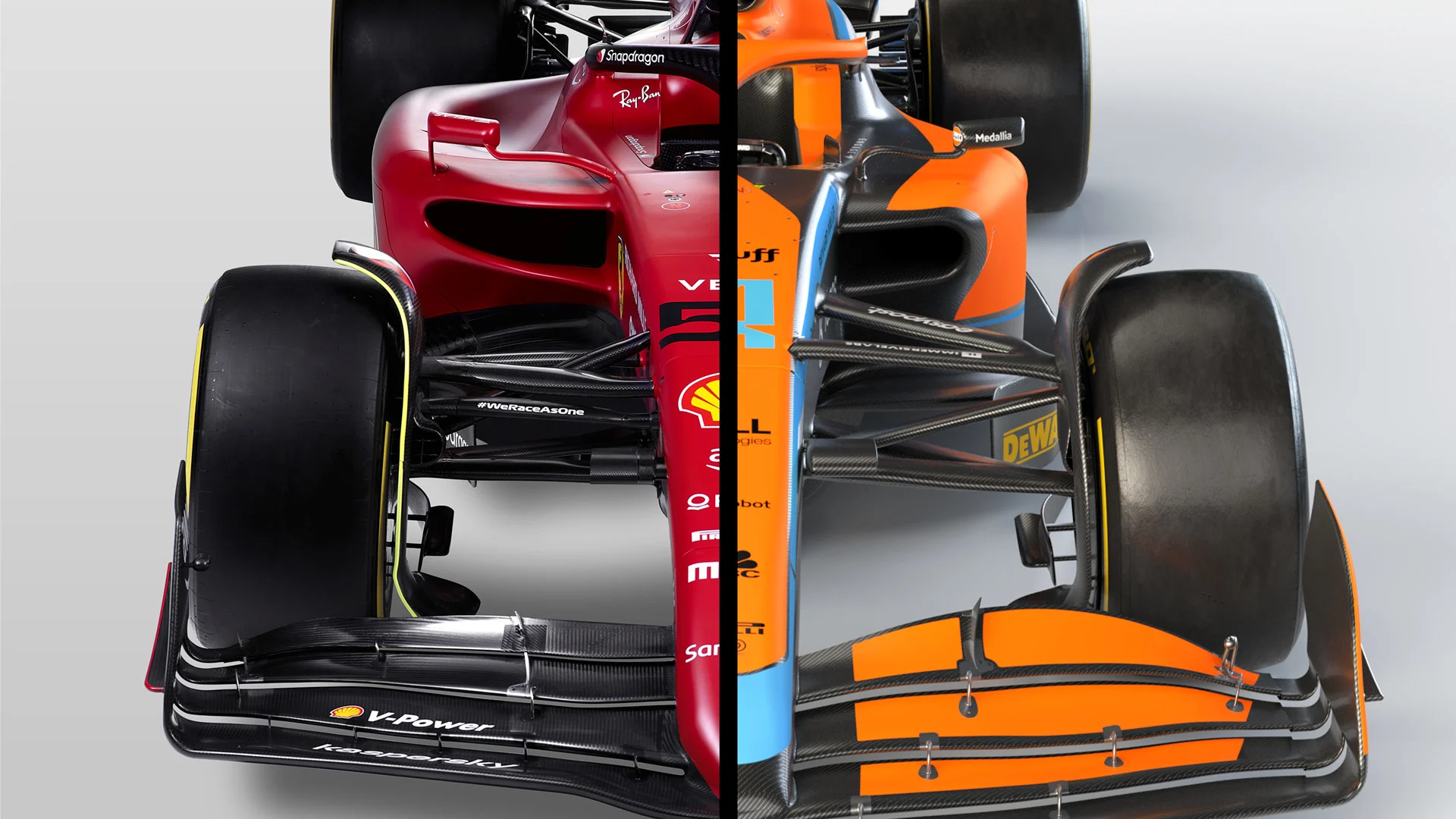ANALYSIS: Ferrari sidepods hint at unique direction for F1-75


In a launch season characterised by the quite dramatic visual differences between cars, the new Ferrari F1-75 represents yet another unique way of configuring the bodywork under the new aero regulations.
READ MORE: 'Brave' Ferrari are riding high on confidence as they hunt for championships
Slats and scallops
The Ferrari designers have opted for a sidepod arrangement which ramps gently down in its lower regions, but which has an upward ramp where the sidepods merge into the engine cover and with a scalloped-out section in that transition. Like the Aston Martin, it has cooling slats on the sidepod top surface.
The upward profile of the upper bodywork above the sidepod strongly suggests that the radiators have been laid out almost horizontally, with the cooling tunnels sweeping upwards past the engine cam covers rather in the way of last year’s Williams.
.webp)
This has given a sidepod shape which is heavily undercut at the very front beneath the small slat-like radiator inlet, but which quickly merges with a flat, slab side before then heavily undercutting once more as it merges into the coke bottle section at the rear.
Because the new regulations have taken a lot of forward sidepod area up with the floor venturi tunnels and the wheelbases have been shortened to a maximum of 3600mm (shorter than last year’s shortest car), it has led to a re-assessment of what the optimum aerodynamic solution is for the cooling architecture and therefore the sidepod and engine cover shapes. Hence the great variation between teams.
AS IT HAPPENED: Watch as Ferrari launch their 2022 F1-75 challenger

Aero challenges
The big aerodynamic challenge in this area of the car remains how to maximise the speed of the airflow into the floor (now via the tunnel inlets) and down the sides and what the most efficient trade-off is between those separate flows.
The effectiveness of the venturi tunnel shape in lowering the air pressure of the underside (and therefore increasing the downforce) will determine how strongly the airflow is pulled into those venturi inlets. The sizing and shape of those inlets is therefore crucial. The cooling arrangement has to be configured around that aerodynamic requirement.
Whereas McLaren have opted for a very bluff sidepod shape when viewed from head-on, creating a high-pressure area there which will help give a more powerful outwash away from the floor, Ferrari have used only the top leading edge to do that and instead hollowed out a big undercut area beneath. These are just different ways of making that trade-off.

Just ahead of those undercuts, Ferrari appear to have made the same ‘double tea tray’ ruse as Aston Martin, initiating the airflow into splitting into separate flows with one feeding to the venturi inlets, the other around the bodywork sides. Underneath that distinctive engine cover is an all-new power unit on which much of Ferrari’s hopes rest.
Team boss Mattia Binotto confirmed this has given a useful performance boost over the previous unit and is combined with the new energy recovery system that was introduced in the latter part of last season.
The architecture of the engine is quite different, though it is believed to retain the combined turbine/compressor turbo which, now that Alpine have switched to the split layout, makes the Ferrari unique in that respect.
Up front, the wing elements are clearly not the real ones as they have no aerofoil profile, but the nose shape can be seen to have a pronounced hollowed out section beneath which will reduce the air pressure and thereby enhance downforce. The front suspension remains pushrod and the rear pullrod.
More on the 2022 Formula 1 car launches
Massive variation and ingenious solutions – What we learned from the first week of 2022 launches
ANALYSIS: Williams forge their own path with FW44 design
ANALYSIS: The intriguing design features on Aston Martin’s new AMR22
Can Williams make another step forward in 2022?
ANALYSIS: The fascinating design features – and Red Bull cues – on AlphaTauri’s AT03
Next Up
Related Articles
 F1, the FIA and 11 teams sign 2026 Concorde Agreement
F1, the FIA and 11 teams sign 2026 Concorde Agreement Power RankingsWho did our judges rank as the best F1 driver of 2025?
Power RankingsWho did our judges rank as the best F1 driver of 2025? Stroll opens up on 'noise' that has followed him in F1
Stroll opens up on 'noise' that has followed him in F1 3 inspiring individuals share their paths to working in F1
3 inspiring individuals share their paths to working in F1 Formula 1 to return to Portugal in 2027 and 2028
Formula 1 to return to Portugal in 2027 and 2028 ‘I have achieved my dream, that little boy's dream’ – Norris
‘I have achieved my dream, that little boy's dream’ – Norris